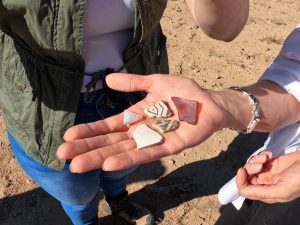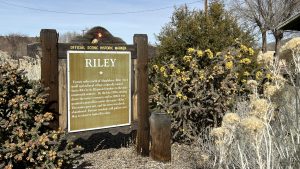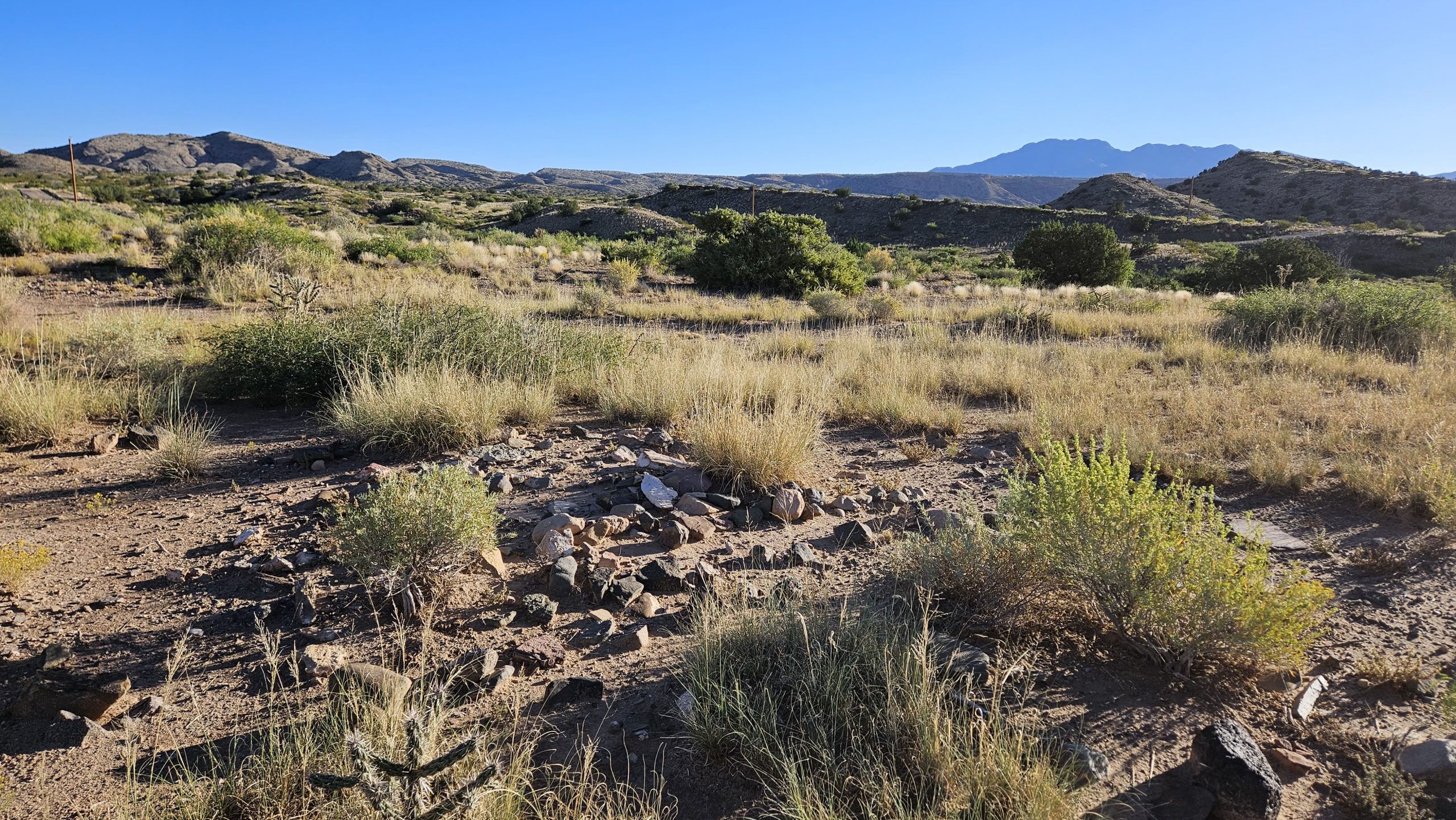
Pottery and glass sherds, representing the pre-contact and historic components of the Fetterman Archaeology Preserve.
Photo Credit: Susan Bowdoin for The Archaeological Conservancy
Longtime Conservancy member and Southwestern archaeologist Jerry Fetterman has donated a twenty-acre lot that contains a 1,200-year-old site as well as more recent ruins. The site, which is named after Fetterman, is near the former mining town of Riley in west-central New Mexico. Fetterman discovered and mapped the site during a cultural resource survey for the proposed Santa Rita Ranch subdivision in 2005. The Fetterman site contains historic structures and features of Ancestral Puebloan occupations from both the Pueblo I and II periods (A.D. 750 – 1150).

This NM Scenic Historic Marker describing the origins of the small village of Riley (originally Santa Rita) can be found in Magdalena, NM.
Photo Credit: Susan Bowdoin
Riley was founded in 1880 by a small colony of nearby farmers, and it was originally called Santa Rita. In 1890, the first post office opened and associated records show the name had changed to Riley, the name of a local sheep rancher. By 1897, about 150 people lived in Riley, and there were two stores, a Catholic church, and a stone school. The church and school are still standing and can be seen from the preserve. Four nearby coal and manganese mines allowed the town to prosper. But it slowly declined as the coal and manganese deposits were depleted, a drop in the water table affected crop production, and the land became overgrazed. By 1931, the post office had closed.




